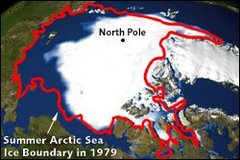The adage "You reap what you sow" rings acutely true for those that seek to jumper the natural DNA in our food with herbicide resistant genes. A report from the Gardian details another blow for the GM industry:
Modified rape crosses with wild plant to create tough pesticide-resistant strain
Modified genes from crops in a GM crop trial have transferred into local wild plants, creating a form of herbicide-resistant "superweed", the Guardian can reveal.
The cross-fertilisation between GM oilseed rape, a brassica, and a distantly related plant, charlock, had been discounted as virtually impossible by scientists with the environment department. It was found during a follow up to the government's three-year trials of GM crops which ended two years ago.
The new form of charlock was growing among many others in a field which had been used to grow GM rape. When scientists treated it with lethal herbicide it showed no ill-effects.
It is actually not too hard to make a mutant according to the theorists and a French experiment:
Brian Johnson, an ecological geneticist and member of the government's specialist scientific group which assessed the farm trials, has no doubt of the significance. "You only need one event in several million. As soon as it has taken place the new plant has a huge selective advantage. That plant will multiply rapidly."
Dr Johnson, who is head of the biotechnology advisory unit and head of the land management technologies group at English Nature, the government nature advisers, said: "Unlike the researchers I am not surprised by this. If you apply herbicide to plants which is lethal, eventually a resistant survivor will turn up."
The glufosinate-ammonium herbicide used in this case put "huge selective pressure likely to cause rapid evolution of resistance".
To assess the potential of herbicide-resistant weeds as a danger to crops, a French researcher placed a single triazine-resistant weed, known as fat hen, in maize fields where atrazine was being used to control weeds. After four years the plants had multiplied to an average of 103,000 plants, Dr Johnson said.
Look on the bright side, this puts the kibosh on the
"Intelligent Design" theory that President Bush has announced he wants taught alongside
The Theory of Evolution. No sign of any intelligent designer on this planet so far, not if you are looking in the labs of
Monsanto and the like.

